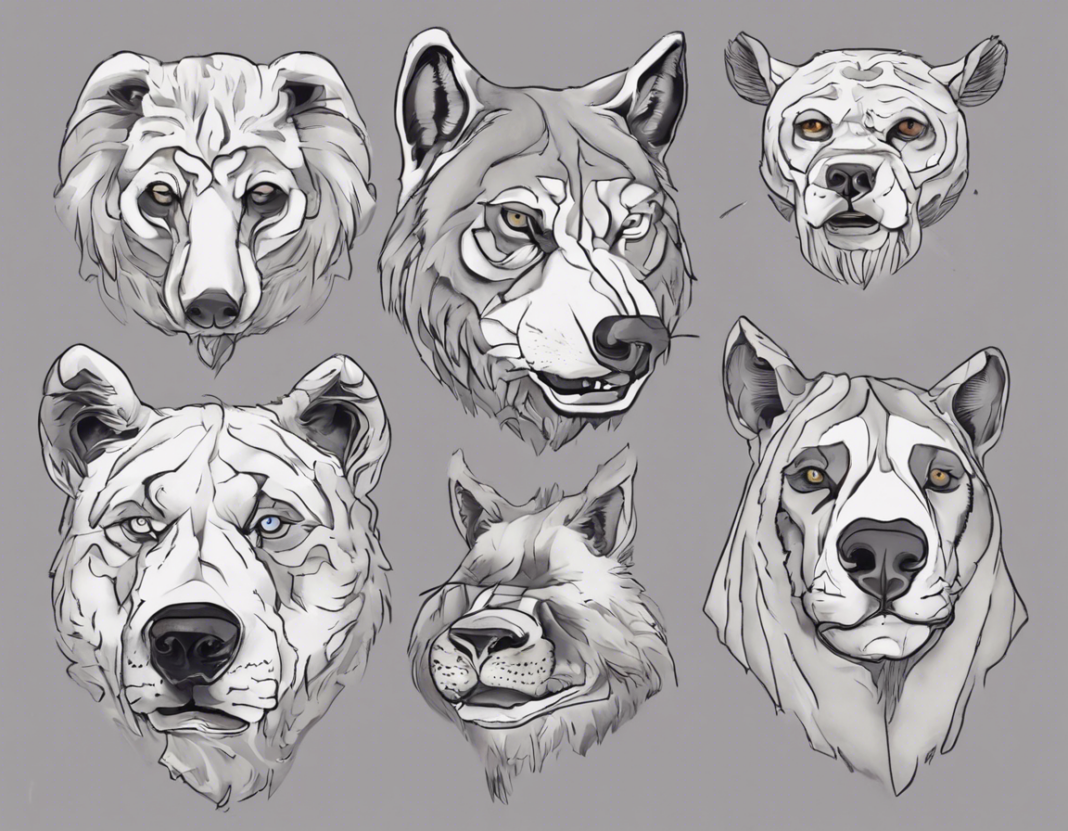Animals have always fascinated humans with their diversity and unique features. From the majestic lion to the curious chameleon, each animal species showcases distinctive characteristics that set them apart in the animal kingdom. One intriguing aspect that stands out among different species is their facial features. The animal face strain refers to the distinctiveness and uniqueness of facial characteristics across various animal species. In this comprehensive guide, we will delve into the fascinating world of animal faces, exploring the reasons behind their diversity, the role of facial features in animal behavior and survival, and the parallels between animal faces and human emotions.
Evolution of Animal Faces
The evolution of animal faces is a complex interplay of genetic, environmental, and selective factors. Over millions of years, animals have developed intricate facial features that are finely tuned to suit their specific habitats, diets, and social structures. Natural selection plays a crucial role in shaping animal faces, as species with advantageous facial features are more likely to survive and reproduce, passing on their genetic traits to future generations. For example, predators like lions have evolved sharp teeth and powerful jaws for hunting, while prey animals like gazelles have large eyes and ears to detect predators early.
Adaptations for Survival
Animal faces are highly specialized to facilitate survival in diverse environments. Each species has unique adaptations that help them thrive in their respective ecosystems. For instance, polar bears have small, rounded ears and a short snout to minimize heat loss in their icy habitats, while camels have long eyelashes and nostrils that can close to protect them from sandstorms in the desert. These adaptations are essential for the survival of the species and illustrate the remarkable diversity of animal faces in nature.
Role of Facial Features in Communication
Facial expressions play a crucial role in communication among animals. From primates to birds, many species use facial expressions to convey emotions, intentions, and social status. For example, a chimp may bare its teeth as a sign of aggression, while a dog may wag its tail to signal friendliness. The diversity of facial expressions across different species reflects the complexity of animal communication and the importance of non-verbal cues in social interactions.
Facial Recognition in the Animal Kingdom
Facial recognition is not unique to humans; many animals possess the ability to recognize and distinguish between different faces. Dolphins have been shown to recognize individual dolphins based on their unique facial features, while ants use chemical signals on their faces to identify nestmates. This ability to recognize faces is crucial for maintaining social cohesion, forming alliances, and avoiding conflicts within animal groups.
Animal Faces and Human Emotions
The diversity of animal faces often draws parallels to human emotions. Humans have a tendency to anthropomorphize animals, attributing human-like emotions and expressions to them based on their facial features. While animals may display expressions that resemble human emotions, it is essential to remember that their behaviors are driven by instinct and adaptation rather than complex emotional states. Understanding the unique facial features of animals can help us appreciate their natural behaviors and adaptations in the wild.
FAQ
Q1: Why do animals have different facial features?
A1: Animals have evolved diverse facial features to adapt to their specific environments, diets, and social structures. These features play a crucial role in their survival and reproductive success.
Q2: How do animals use facial expressions for communication?
A2: Many animal species use facial expressions to convey emotions, intentions, and social status. Facial expressions help animals communicate with other members of their species and navigate social interactions.
Q3: Can animals recognize individual faces?
A3: Yes, many animals have the ability to recognize and distinguish between individual faces. This skill is essential for maintaining social relationships, identifying kin, and avoiding conflicts within animal groups.
Q4: Do animals experience emotions like humans?
A4: While animals may display behaviors and expressions that resemble human emotions, their actions are primarily driven by instinct and adaptive responses to their environments. Animals do not experience emotions in the same way humans do.
Q5: How are animal facial features shaped by natural selection?
A5: Natural selection plays a significant role in shaping animal facial features. Species with advantageous facial traits that enhance their survival and reproductive success are more likely to pass on these traits to future generations.
In conclusion, the animal face strain offers a unique glimpse into the fascinating world of animal diversity and adaptation. From the evolution of facial features to their role in communication and survival, animal faces serve as a testament to the remarkable complexity and beauty of the natural world. By studying and appreciating the unique facial characteristics of animals, we can gain a deeper understanding of their behaviors, interactions, and ecological roles in the wild.
